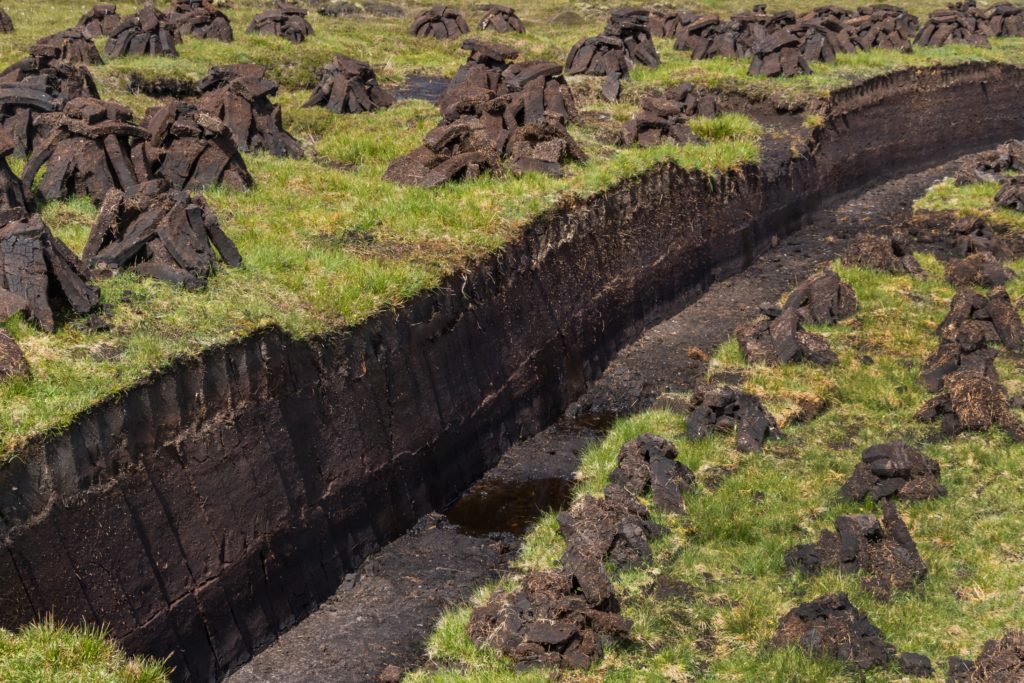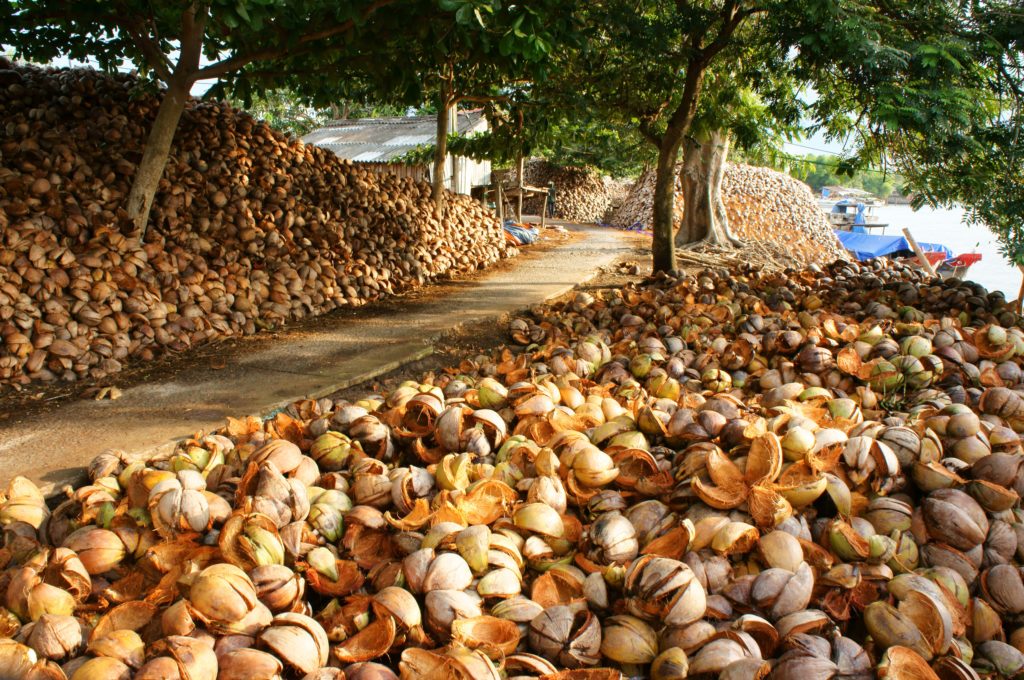
Peat Moss Bog 
Coconuts For their Coir
The choice of peat moss or coco coir is a hot topic among many gardeners. While both soil mediums create a healthy foundation for plants, gardeners definitely have their preference. Which one you chose will depend on the specific properties you are looking for and how you plan to create your soil mixture.
Environmentally Friendly
While both peat moss and coco coir both come from natural resources, coco coir is more environmentally friendly and is considered a more renewable resource. Peat moss is derived from decomposed sphagnum moss harvested from swamps and marshes. After harvesting, efforts are made to restore the peat bogs, but it is still unclear whether the bogs can ever return to pre-harvest conditions.
Coco coir, on the other hand, is a by-product of the coconut industry and used to be discarded. Today, many uses have been found for this material, which is a renewable resource made from the fibrous husk of a coconut. Both of these resources are all-natural, but harvesting coir has less of an impact on the environment.
Water Absorption and Hydrating Qualities

Both peat moss and coco coir are able to absorb 10 to 20 times their dry weight in water. As a result, both products can be used for hydroponic gardening. Because of their high rates of water absorption, you must be careful not to overwater your plants. If your plants’ root systems are too wet, they could decompose.
Although peat moss can also be used for hydroponic gardening, it requires more maintenance. Peat moss is hydrophobic, and if it’s allowed to dry out, it becomes very slow to accept and absorb water. Coco coir, on the other hand, will not dry out if left unattended and is the superior soil for this type of gardening.
Nutrient Comparisons
When it comes to nutrients, both peat moss and coco coir have slight differences. While peat moss is considered acidic with a pH level between 3.3 and 4.4, coco coir has a pH level more in the neutral range of 5.2 to 6.8. As a result, peat moss will require additives, such as lime, to reduce the acidity of the soil.
Phosphorous, potassium, and nitrogen are usually added to soil to make it more nutritious. With coco coir, this step is not necessary. Coir is naturally high in potassium and phosphorus, so these do not need to be added. However, coir is low in nitrogen, calcium, and magnesium, so these nutrients must be added to the soil.
Breeding Ground for Microorganisms
Both peat moss and coco coir provide a great breeding ground for the microorganisms, bacteria, and fungi essential for healthy plant growth. One advantage of peat moss is that it typically already contains beneficial microorganisms when harvested.
Cation Exchange Capacity
Whether you choose to use peat moss or coco coir as a stand-alone soil substitute or choose to mix it with traditional soil, there are considerations to take into account with both. Both products provide a beneficial soil addition when monitored for optimum nutrition balance. For most gardeners, the choice is a matter of personal preference.”
-The Coir.com Team



Leave a Reply
You must be logged in to post a comment.